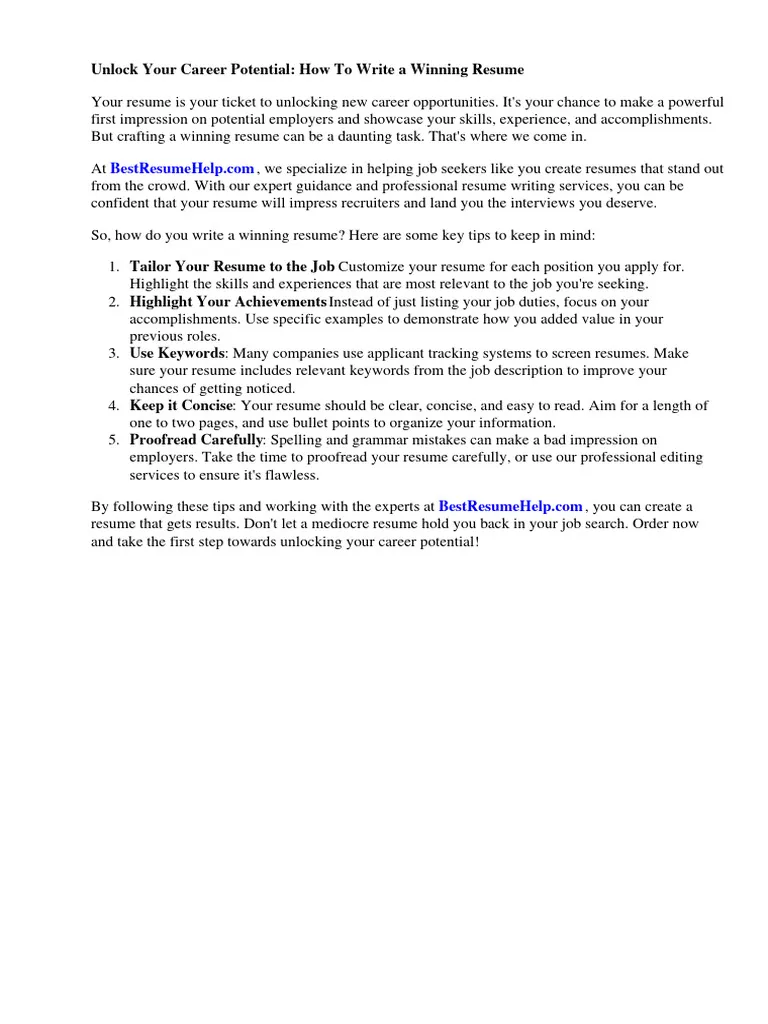Understanding Internal Job Applications
Navigating the internal job market requires a strategic approach, and a well-crafted cover letter is your key to success. Unlike external applications, internal applications often involve a different set of dynamics. You’re not just selling your skills; you’re also demonstrating your understanding of the company culture, your existing relationships, and your potential for growth within the organization. This guide provides a step-by-step approach to writing a cover letter that highlights your qualifications and makes you stand out from the competition. By focusing on the specific needs of the internal hiring process, you can significantly increase your chances of landing your dream job.
Why a Cover Letter Matters
In an internal job application, a cover letter serves as your opportunity to connect with the hiring manager on a more personal level. It allows you to showcase your personality, enthusiasm, and specific qualifications that might not be immediately apparent in your resume. A well-written cover letter provides context for your application and enables you to address any potential concerns the hiring manager might have. It is your chance to articulate your career goals and how they align with the role and the company’s objectives. By demonstrating your interest and knowledge of the company, you increase the likelihood of an interview and potentially securing the position.
A compelling cover letter can be the deciding factor, especially when competing against other internal candidates. It demonstrates your commitment to the company and your understanding of its values and goals. It offers you a platform to expand upon your resume, highlight specific achievements, and express your desire to contribute further to the organization’s success. This is also a chance to share your vision for the role and how you intend to make a positive impact on the team and the company. The cover letter gives you a significant advantage in the internal job application process.
The Importance of Tailoring
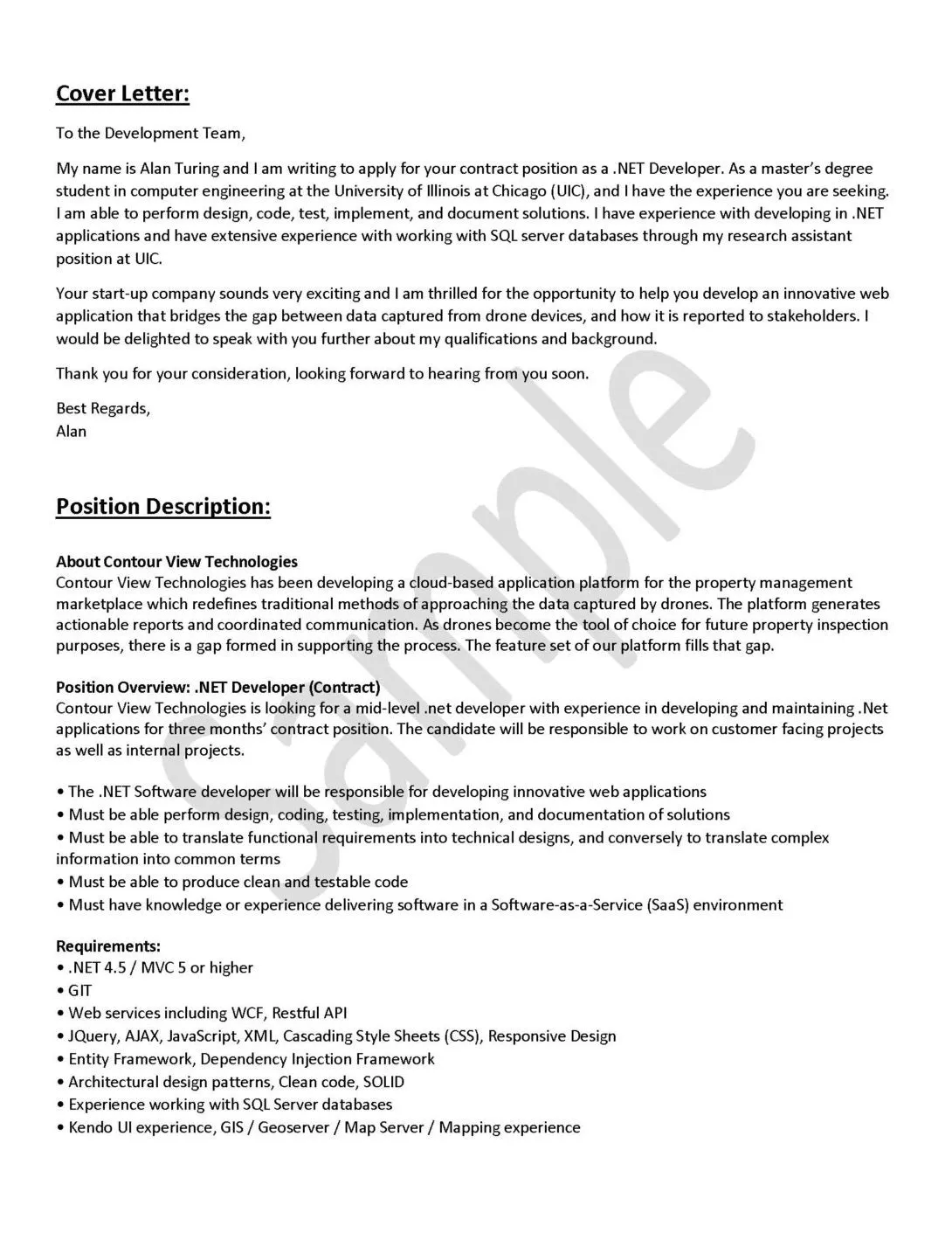
One of the most critical aspects of an effective internal cover letter is tailoring it to the specific role and the company’s needs. Generic cover letters are easily dismissed as they fail to demonstrate genuine interest or understanding. Begin by thoroughly researching the job description, identifying the key skills and qualifications the hiring manager is seeking. Then, carefully consider your past experiences and pinpoint the specific instances where you have demonstrated those skills or achieved similar results. This process is vital for presenting your achievements in a way that resonates with the requirements of the new role.
Use the job description as a guide to structure your cover letter, ensuring you address each key requirement. Highlight the skills and experience that are most relevant to the role. Providing concrete examples of how you’ve used these skills to achieve positive outcomes is essential. Tailoring your cover letter demonstrates your understanding of the position and your ability to meet the challenges. This demonstrates that you are not just applying for a job, you are making a strategic move towards your career goals. By carefully tailoring your cover letter, you present yourself as the ideal candidate.
Step-by-Step Guide to Writing an Internal Cover Letter
Header and Contact Information
Your cover letter should begin with a professional header that includes your contact information. Provide your full name, professional title if applicable, phone number, email address, and the date. It is also recommended to include the hiring manager’s name and title, if known. When applying internally, you can sometimes utilize the same template you used for your resume or create a new and compelling layout that is unique to you.
Addressing the Hiring Manager
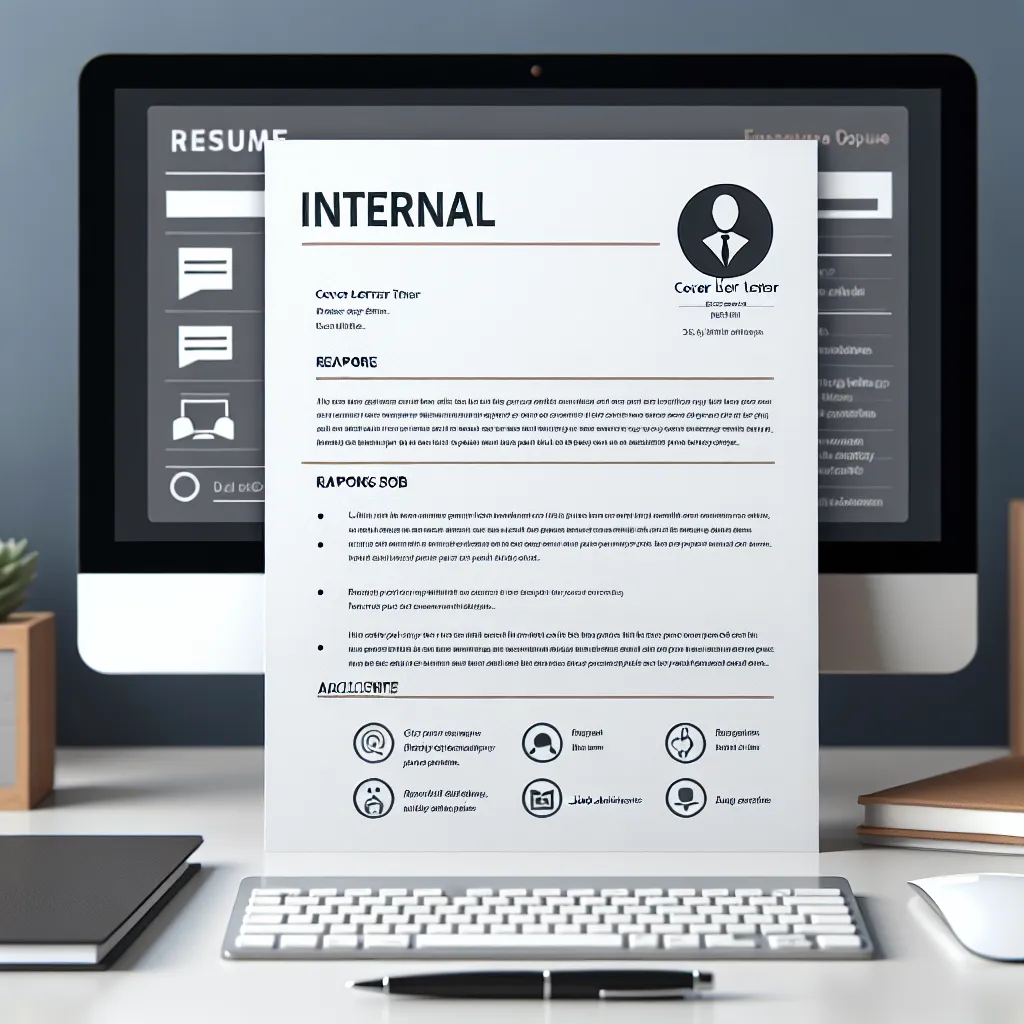
Always address your cover letter to the hiring manager by name, if possible. This demonstrates your attention to detail and shows that you’ve taken the time to research the position. If the name isn’t available, use a professional salutation, such as “Dear Hiring Manager” or “Dear [Department Name] Team.” This shows that you are professional and value their time. Avoid generic greetings, such as “To Whom It May Concern,” as they can come across as impersonal.
Opening Paragraph Grab Attention
The opening paragraph is your first opportunity to make a positive impression. Start with a strong statement that immediately captures the hiring manager’s attention. State the specific position you are applying for and how you learned about it. Consider mentioning your current role, your tenure with the company, and your enthusiasm for the new opportunity. The opening paragraph should clearly and concisely state your purpose and express your interest in the role. This sets the stage for the rest of your cover letter and encourages the reader to continue.
Highlighting Relevant Skills and Experience
The body of your cover letter should focus on highlighting the skills and experience most relevant to the job description. Review the job posting and identify the key requirements. Then, provide specific examples of how you have demonstrated these skills in your previous roles within the company. Provide concrete examples of your achievements and show how your skills align with the needs of the new role. Use action verbs to describe your responsibilities and accomplishments, and quantify your results whenever possible. This section should demonstrate your value to the company and how your abilities fit the new position.
Showcasing Achievements and Results

One of the most effective ways to demonstrate your value is to showcase your achievements and results. Quantify your accomplishments whenever possible to demonstrate the impact of your work. For example, instead of saying “Improved customer satisfaction,” state “Increased customer satisfaction scores by 15% in Q3.” Use the STAR method (Situation, Task, Action, Result) to structure your examples. Describe the situation, the task you faced, the actions you took, and the positive results you achieved. Showing your achievements proves your ability to excel in the new role and contribute positively to the team and the company.
Demonstrating Company Knowledge and Enthusiasm
Demonstrating your knowledge of the company and your enthusiasm for the role is essential for an internal job application. Refer to company values, recent initiatives, or projects you’re familiar with. Showing that you are aware of the company’s goals and how the new role fits into them. Express your excitement about the opportunity to contribute to the company’s success. Show how your values align with the company culture and share your vision for the role. Your ability to align your personal and professional goals with the company’s mission is a testament to your commitment and is a powerful tool for securing the position.
Closing the Cover Letter
In your closing paragraph, restate your interest in the position and reiterate your key qualifications. Express your gratitude for the opportunity to be considered. Include a call to action, such as stating that you look forward to discussing your qualifications further in an interview. Keep the closing concise and professional. Thank the hiring manager for their time and consideration and end with a professional closing, such as “Sincerely” or “Best regards,” followed by your name.
Proofreading and Editing
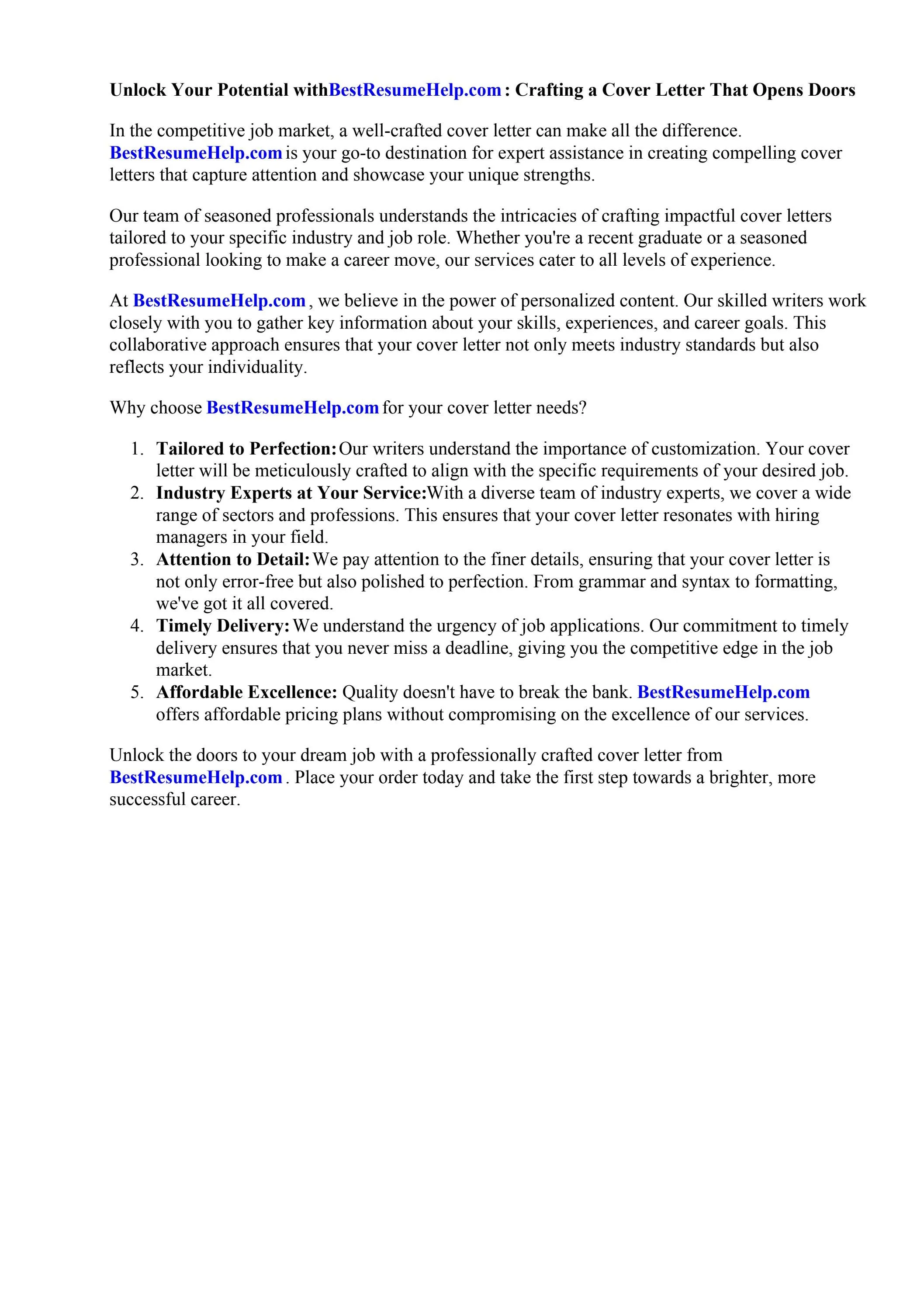
Proofreading and editing your cover letter is crucial. Errors in grammar, spelling, or punctuation can undermine your credibility and make you appear unprofessional. Carefully review your cover letter for any mistakes before submitting it. Use a spell checker and grammar checker, but also read your letter aloud to catch any awkward phrasing or unclear sentences. It’s always beneficial to have a trusted colleague or friend review your letter for a fresh perspective. This ensures that your cover letter is polished and accurately represents your qualifications and abilities.
Key Differences from External Cover Letters
Focus on Internal Company Culture
When writing an internal cover letter, it’s essential to show that you understand and align with the company culture. Discuss your experiences within the company and how you’ve embraced the company’s values. Show how you’ve contributed to a positive work environment and built relationships with colleagues. Demonstrate your understanding of the company’s mission, values, and goals. Showing you can not only perform the duties of the role but also excel within the company’s culture is key to winning the position.
Referencing Internal Relationships
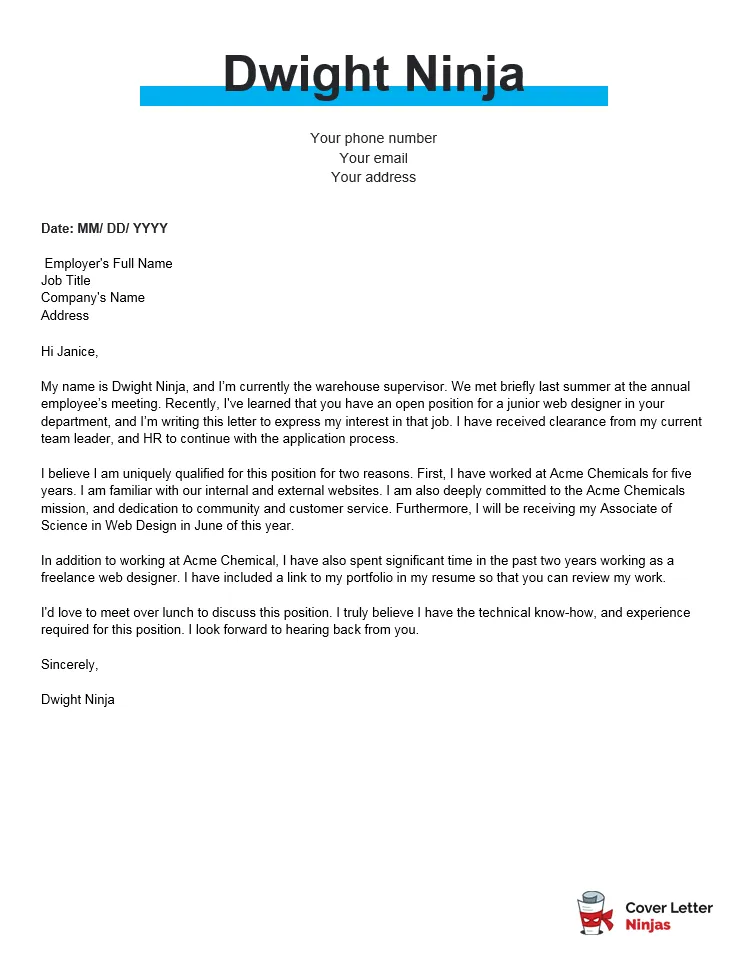
In an internal cover letter, it can be appropriate to reference internal relationships you have. If you’ve worked on projects with the hiring manager or other members of the team, mention these experiences and the positive results achieved. This can showcase your ability to collaborate effectively and integrate into the team. If you’ve received positive feedback or recommendations from colleagues, consider including a brief mention (with permission). Referencing internal relationships can help demonstrate your existing value and enhance the hiring manager’s perception of your potential.
Using Company-Specific Language
Using company-specific language and terminology is also vital. Demonstrate your familiarity with the company’s internal jargon, processes, and systems. This shows that you’re already integrated into the company’s operations. This also ensures that your application reflects your knowledge of the business and reinforces your understanding of the role and how you intend to add value. Using company language assures the hiring team that you can adapt to their communication style, which can significantly improve your chances of winning the role.
Common Mistakes to Avoid
Generic Cover Letters
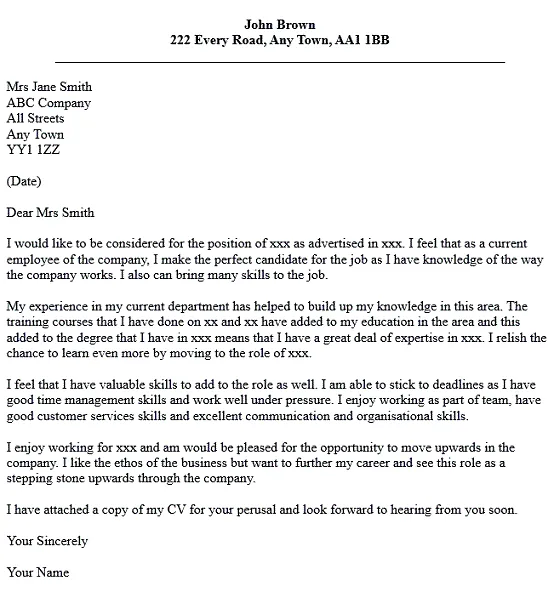
Avoid sending generic cover letters that are not tailored to the specific role. Generic cover letters don’t show that you understand the specific requirements of the job. Tailor your letter to the company’s needs and the individual job description. Make sure to showcase why you are the best fit for the role and how your skills and experiences align with the specific needs of the new position. This can improve your chances and set you apart from the competition.
Failing to Tailor to the Role
Failure to tailor your cover letter to the specific role is a common mistake. Reiterate the requirements of the job description and identify specific examples of how your skills and experience match those requirements. If you present a cover letter that feels like a generic application, the hiring manager may assume you have not carefully considered their needs. Tailor your letter to align with the job description and demonstrate your ability to meet their needs. Demonstrating that you meet the specific requirements of the job description can make you stand out.
Focusing Too Much on the Past
Focusing too much on past experiences without highlighting how they relate to the new role is a common mistake. While it’s important to showcase your skills and experience, it’s essential to demonstrate how these translate into value for the new position. While you should highlight past accomplishments, it is important to emphasize your accomplishments. Connect the past to the future, illustrating how your skills and experience will allow you to excel in the new role and contribute to the company’s future success. Focusing too much on past experiences without showing their relevance will prevent you from winning the role.
Not Proofreading
Failing to proofread your cover letter for errors in grammar, spelling, and punctuation is a critical mistake. Errors can undermine your credibility and make you appear unprofessional. Ensure that your cover letter is well-written and error-free. Make sure to thoroughly review your cover letter, utilizing spell check and grammar check tools. Asking a friend or colleague to review your cover letter can offer valuable insights. If you want to win the role, make sure to proofread your work.
Final Tips for Success
Follow Up After Submission
Following up after submitting your cover letter and application can demonstrate your continued interest in the position. After submitting your application, send a brief email to the hiring manager to reiterate your interest and reiterate your key qualifications. However, avoid being overly persistent, as this can be counterproductive. It’s advisable to follow up within a week or two, if you haven’t heard back from the hiring manager. Following up after submission can reiterate your interest and demonstrate your professionalism.
Practice and Refine
Practice and refine your cover letter writing skills. Write multiple drafts and seek feedback from colleagues or career counselors. Practice makes perfect, so writing cover letters regularly will enhance your writing skills. Be open to suggestions and implement necessary changes. Refine your writing style. This process helps you to create a compelling cover letter that effectively showcases your qualifications and maximizes your chances of getting the job. Regular practice is the key to winning.
Prepare for the Interview
Prepare for the interview. If your cover letter is successful, you’ll likely be invited for an interview. Review your cover letter and resume, and prepare to answer questions about your skills, experience, and qualifications. Anticipate common interview questions and prepare your answers in advance. Research the role and company to better prepare yourself. Having a strategy in place can prepare you to answer questions about your career goals. Preparing for the interview is an essential step.
Writing a compelling internal cover letter is a strategic step in your career advancement journey. By following these step-by-step guidelines, tailoring your application, and avoiding common mistakes, you can create a cover letter that effectively showcases your qualifications and increases your chances of landing your desired internal job. Remember to highlight your achievements, demonstrate company knowledge, and express your enthusiasm for the role. Good luck!
